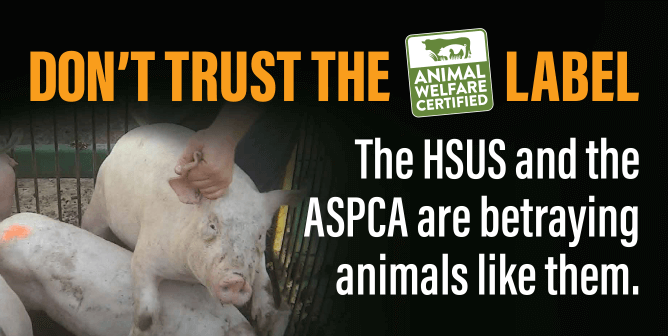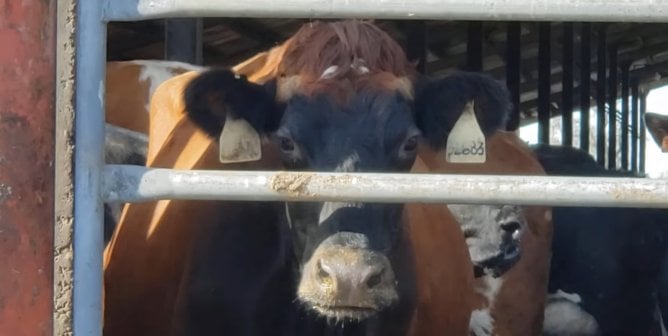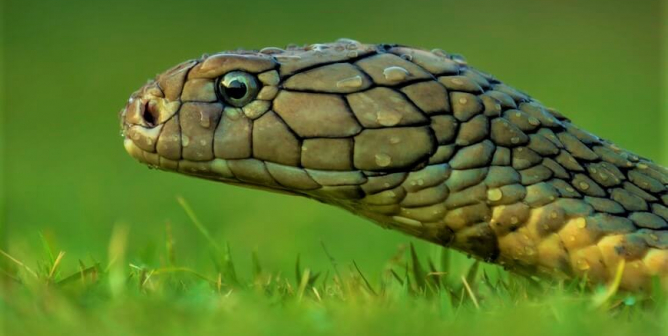The Devil’s Dictionary: Experimenters’ Euphemisms Camouflage Cruelty
See if you can decipher the meaning of the following three sentences:
Our partner in research was given enrichment following the aversive stimuli sessions. It was noticed that the research tool was thermally injured, partially explaining the vocalizations and the effect on the subject’s affiliative behavior. While the incident was not serious enough to produce lethality, the test subject may be terminated after the sessions are completed.
Word salad? You bet.
But our example above uses actual terms taken from published materials describing wasteful and cruel experiments on animals in laboratories.
The terms are euphemisms designed to hide the misery and torment endured by animals imprisoned in laboratories from the public—which pays for many of the experiments they’re subjected to.
Here’s a description of the same incident using language that doesn’t conceal the truth:
Our victim, a tormented monkey, was given a scratched mirror in an otherwise barren cage following the electroshock sessions. The experimenter saw that the terrified animal was burned, partially explaining his screaming and his desire to be comforted by his cagemate. While the incident wasn’t serious enough to be fatal, we can kill him and cut him up when we no longer have any use for him.
PETA has collected numerous examples of phrases used by experimenters attempting to sanitize the atrocities inflicted on animals in laboratories. We’ve compiled them—along with their true meanings—in a continuously growing volume that we’re calling the “Devil’s Dictionary.”
| Term | Meaning |
| Abdominal stretch test | Test in which a compound that causes irritation and pain is injected into the stomach or foot of an animal, causing him or her to writhe in pain as the experimenter counts the number of writhes |
| Acquire | Trap or capture an animal |
| Affective state | An animal’s emotions or feelings |
| Affiliative behavior | Behavior showing that animals are friends with each other |
| Animal research | Confining, tormenting, and killing animals |
| Aversive stimuli, negative reinforcement | Repeated electric shocks to an animal’s feet, injection of a chemical that burns, or other abuse |
| Bilateral lid suture, binocular deprivation | Sewing both eyelids shut |
| Canis familiaris | Dog (In grant applications and published papers, experimenters frequently use the Latin term for “dog” to keep concerned members of the public from knowing that they’re using companion animals as experimental tools.) |
| Cervical dislocation | Snapping an animal’s neck |
| Enrichment | Items such as plastic toys, scratched mirrors, or pieces of wood with holes drilled into them given to animals who live in the impoverished conditions of a laboratory cage (Laboratory cages are small, barren environments devoid of the smells, sights, and sounds of a natural environment—depriving animals of everything that would make their life worth living, including the opportunity to make any meaningful choices about what they can do.) |
| Euthanasia chamber | Cage in which animals are gassed to death |
| Exsanguination | Bleeding an animal to death |
| Flowerpot technique | Technique used in sleep-deprivation experiments in which a mouse or a rat is placed on top of a small platform (such as an upside-down flowerpot) in a bucket of water—the animal may fall off the platform and into the water if REM sleep is entered, so he or she remains in a lighter state called NREM sleep |
| Fluid regulation, fluid restriction | Withholding water and other fluids so that an animal becomes so dehydrated that he or she will comply with an experimenter’s protocol in exchange for a few drops of liquid |
| Food regulation, food restriction | Withholding food from an animal |
| Forced swim test | Test in which a small animal is dropped into a beaker of water from which there’s no escape, causing him or her to try to scale the walls of the beaker, dive down into the water looking for an exit, struggle to keep his or her head above water, and perhaps eventually begin floating |
| Harvest | Remove and collect tissues or organs from an animal |
| Housing an animal | Confining or holding an animal in an empty stainless-steel mesh box that restricts movement and offers little opportunity for natural behavior |
| Individual cage | Cage in which an animal is held all alone |
| Laboratory animal, test animal | Animal (The term “laboratory animal” implies that the animal exists to be used in a laboratory. Experimenters especially like to say “laboratory dog,” falsely implying that ones who are used in laboratories are a different species from the ones who are our family members.) |
| Latency to consumption | Amount of time taken by an animal who’s been deprived of food to begin eating food provided |
| Monocular lid suture, monocular deprivation | Sewing one eyelid shut |
| Nursery | Caging arrangement for infant monkeys after they’ve been permanently separated from their mothers (either alone or with other young monkeys) |
| Parabiosis | A procedure in which two animals are stitched together along the length of their bodies, from their elbows to their knees, to create a shared circulatory system |
| Partners in research | Animals who are confined, tormented, and killed in experiments |
| Retro-orbital sampling | Drawing blood from a blood vessel behind an animal’s eye |
| Sacrifice, produce lethality, terminate | Kill |
| Social defeat | Use of social conflict between members of the same species to generate emotional and psychological stress (According to this recent paper, “Social defeat is initiated when a male rodent is introduced into the home cage of an older, aggressive, dominant male. … [T]he intruder is quickly attacked and forced into subordination for the remainder of the physical interaction. When flight is barred, the intruder will assume a submissive, supine posture, emitting frequent calls of distress and illustrating freezing behavior.”) |
| Subjects, models, test systems, research tools, preparations, products | Animals |
| Tail flick test | Test in which experimenters cause pain by focusing an intense light beam on an animal’s tail (or use some other method to hurt the tail) and measure the time it takes the animal to move his or her tail |
| Thermally injure | Scald or burn |
| Training animals | Withholding fluid from animals so that they’re so dehydrated that they’ll perform the tasks required by experimenters in order to receive a few drops of liquid |
| Vocalizations | Cries of pain and/or distress |
Here’s What You Can Do
No matter what it’s called, using animals in experiments is wrong—period. Using our form at the link below, please urge your congressional representatives to stop funds from being used for cruel, dead-end animal experiments and to direct our tax dollars toward promising, modern, non-animal methods of research instead.




